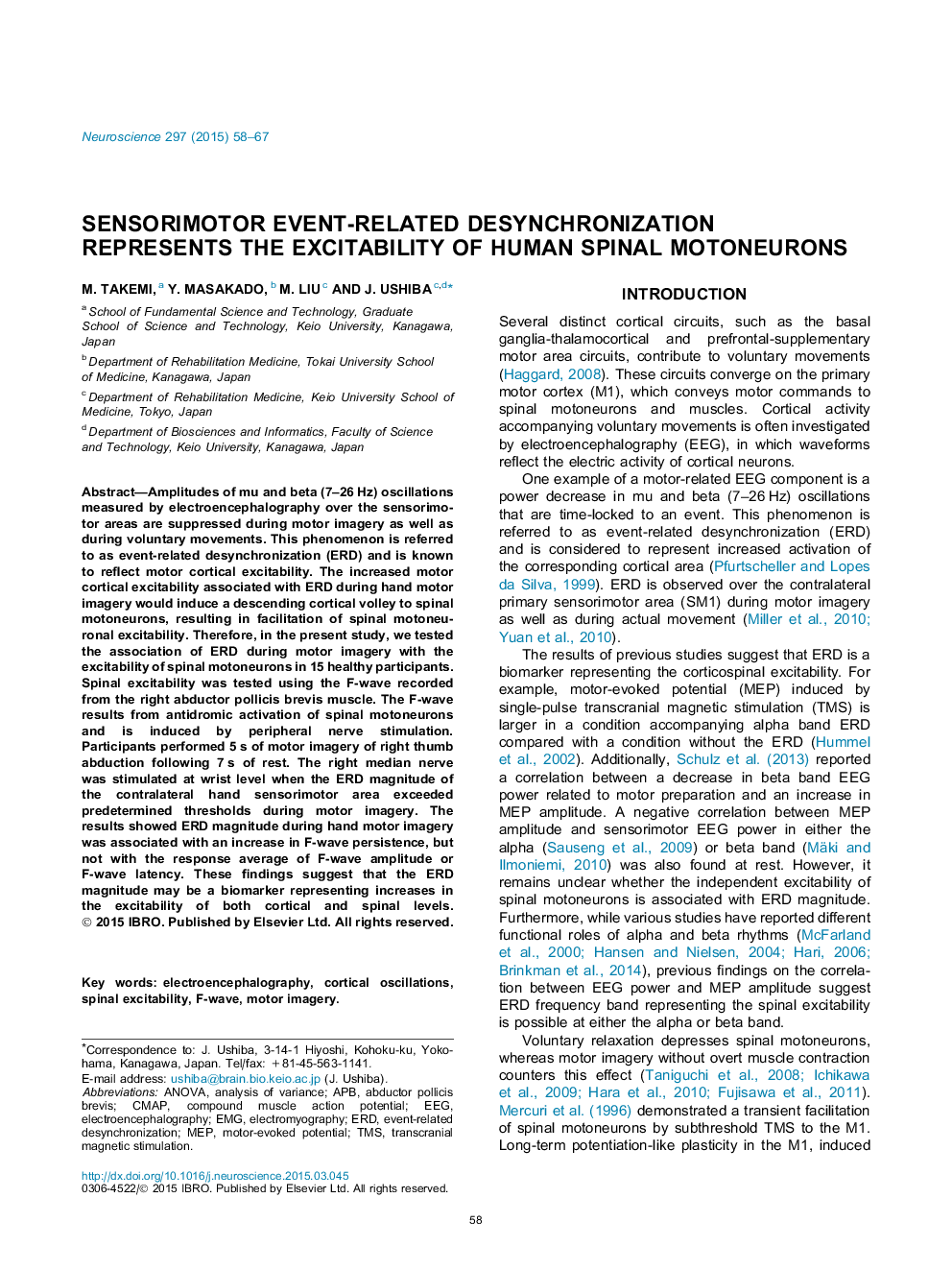| کد مقاله | کد نشریه | سال انتشار | مقاله انگلیسی | نسخه تمام متن |
|---|---|---|---|---|
| 6272296 | 1614779 | 2015 | 10 صفحه PDF | دانلود رایگان |

- Event-related desynchronization (ERD) is known to reflect cortical excitability.
- We tested if ERD in electroencephalography reflects spinal excitability.
- Spinal excitability was assessed using the F-wave.
- Sensorimotor ERD was associated with an increase in F-wave persistence.
- This finding suggests that ERD is a biomarker representing spinal excitability.
Amplitudes of mu and beta (7-26Â Hz) oscillations measured by electroencephalography over the sensorimotor areas are suppressed during motor imagery as well as during voluntary movements. This phenomenon is referred to as event-related desynchronization (ERD) and is known to reflect motor cortical excitability. The increased motor cortical excitability associated with ERD during hand motor imagery would induce a descending cortical volley to spinal motoneurons, resulting in facilitation of spinal motoneuronal excitability. Therefore, in the present study, we tested the association of ERD during motor imagery with the excitability of spinal motoneurons in 15 healthy participants. Spinal excitability was tested using the F-wave recorded from the right abductor pollicis brevis muscle. The F-wave results from antidromic activation of spinal motoneurons and is induced by peripheral nerve stimulation. Participants performed 5Â s of motor imagery of right thumb abduction following 7Â s of rest. The right median nerve was stimulated at wrist level when the ERD magnitude of the contralateral hand sensorimotor area exceeded predetermined thresholds during motor imagery. The results showed ERD magnitude during hand motor imagery was associated with an increase in F-wave persistence, but not with the response average of F-wave amplitude or F-wave latency. These findings suggest that the ERD magnitude may be a biomarker representing increases in the excitability of both cortical and spinal levels.
Journal: Neuroscience - Volume 297, 25 June 2015, Pages 58-67